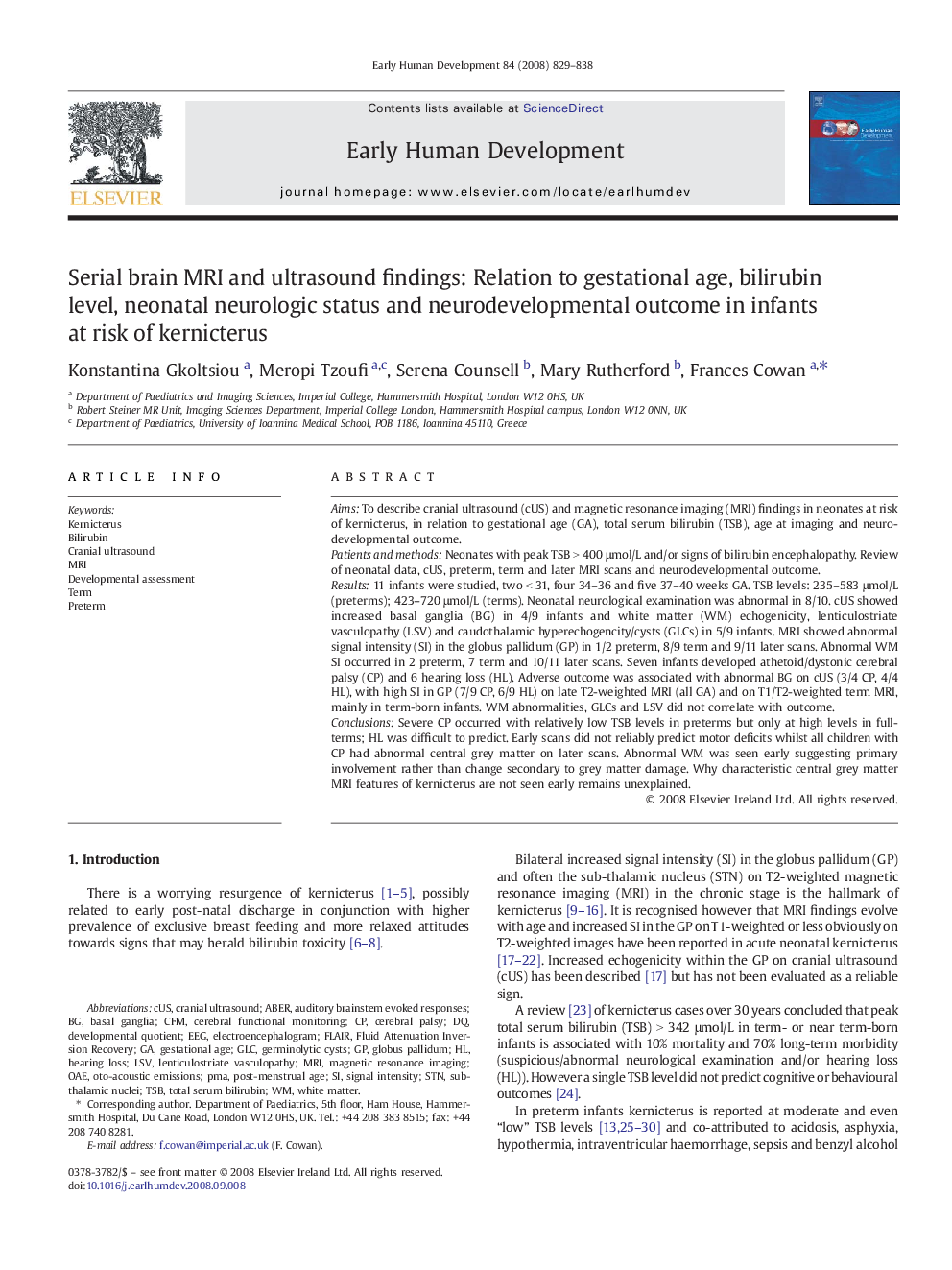| کد مقاله | کد نشریه | سال انتشار | مقاله انگلیسی | نسخه تمام متن |
|---|---|---|---|---|
| 3918067 | 1252170 | 2008 | 10 صفحه PDF | دانلود رایگان |

AimsTo describe cranial ultrasound (cUS) and magnetic resonance imaging (MRI) findings in neonates at risk of kernicterus, in relation to gestational age (GA), total serum bilirubin (TSB), age at imaging and neurodevelopmental outcome.Patients and methodsNeonates with peak TSB > 400 μmol/L and/or signs of bilirubin encephalopathy. Review of neonatal data, cUS, preterm, term and later MRI scans and neurodevelopmental outcome.Results11 infants were studied, two < 31, four 34–36 and five 37–40 weeks GA. TSB levels: 235–583 μmol/L (preterms); 423–720 μmol/L (terms). Neonatal neurological examination was abnormal in 8/10. cUS showed increased basal ganglia (BG) in 4/9 infants and white matter (WM) echogenicity, lenticulostriate vasculopathy (LSV) and caudothalamic hyperechogencity/cysts (GLCs) in 5/9 infants. MRI showed abnormal signal intensity (SI) in the globus pallidum (GP) in 1/2 preterm, 8/9 term and 9/11 later scans. Abnormal WM SI occurred in 2 preterm, 7 term and 10/11 later scans. Seven infants developed athetoid/dystonic cerebral palsy (CP) and 6 hearing loss (HL). Adverse outcome was associated with abnormal BG on cUS (3/4 CP, 4/4 HL), with high SI in GP (7/9 CP, 6/9 HL) on late T2-weighted MRI (all GA) and on T1/T2-weighted term MRI, mainly in term-born infants. WM abnormalities, GLCs and LSV did not correlate with outcome.ConclusionsSevere CP occurred with relatively low TSB levels in preterms but only at high levels in full-terms; HL was difficult to predict. Early scans did not reliably predict motor deficits whilst all children with CP had abnormal central grey matter on later scans. Abnormal WM was seen early suggesting primary involvement rather than change secondary to grey matter damage. Why characteristic central grey matter MRI features of kernicterus are not seen early remains unexplained.
Journal: Early Human Development - Volume 84, Issue 12, December 2008, Pages 829–838